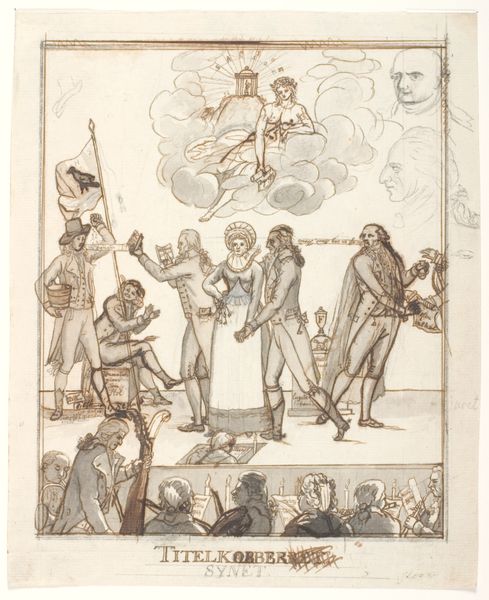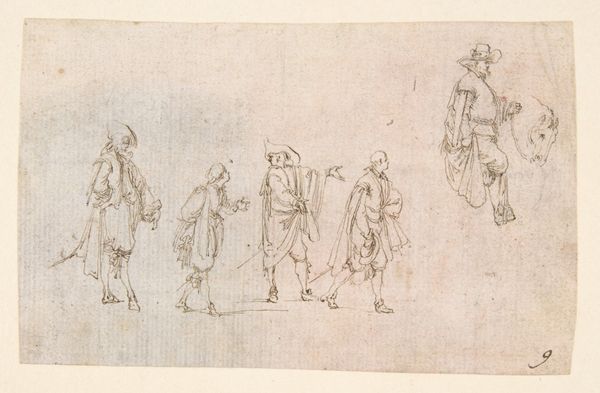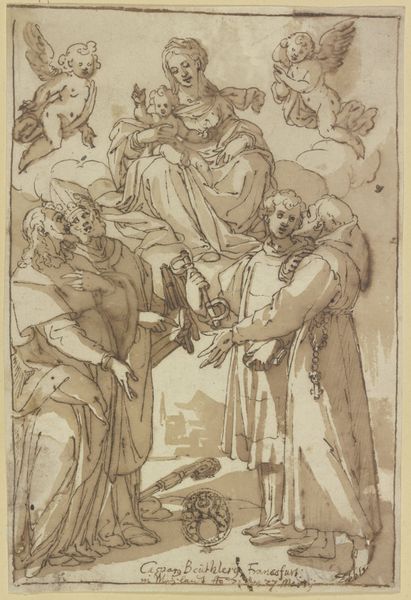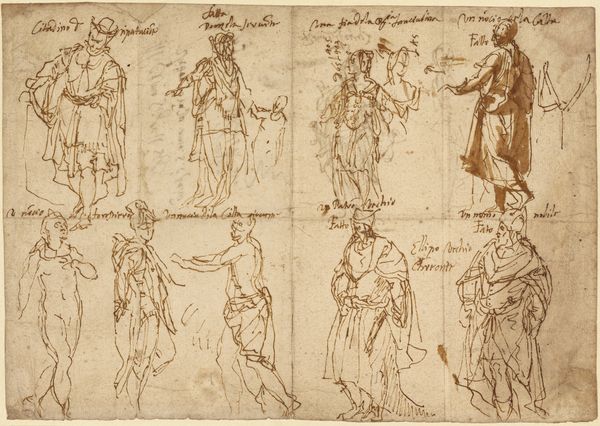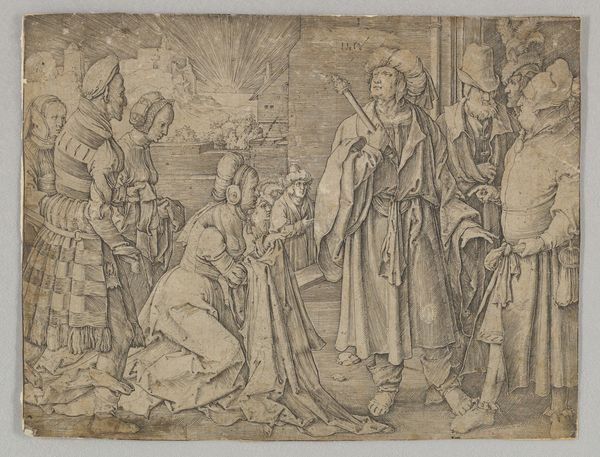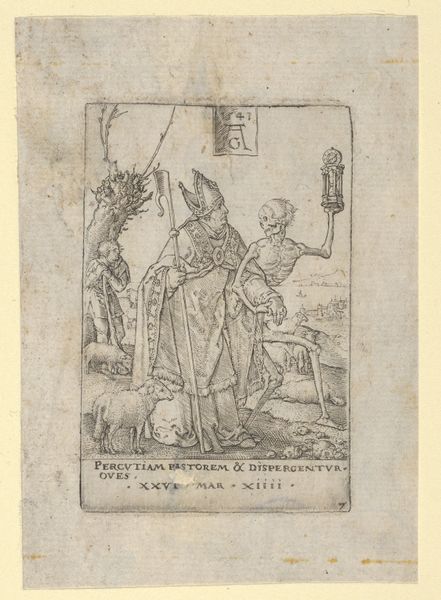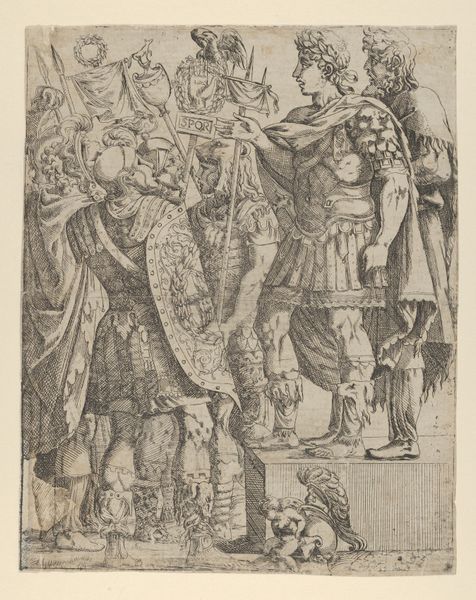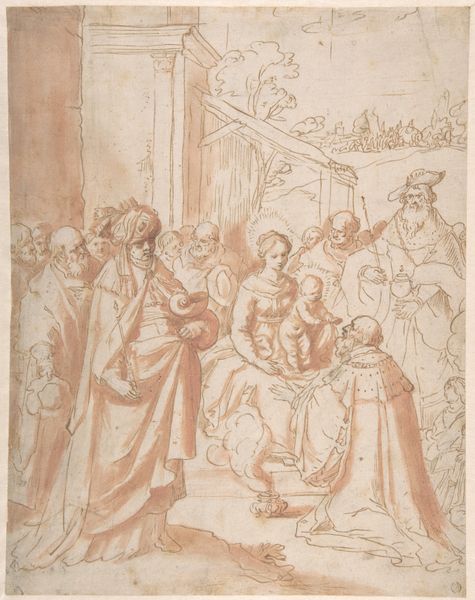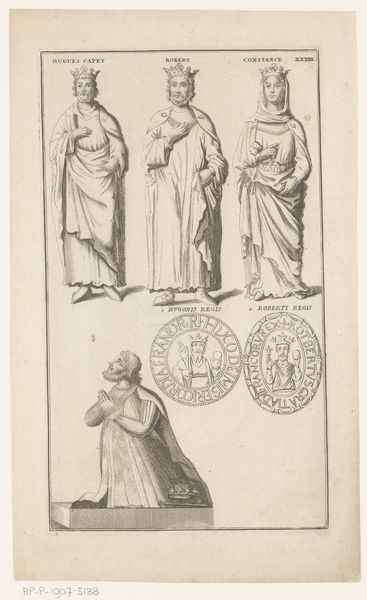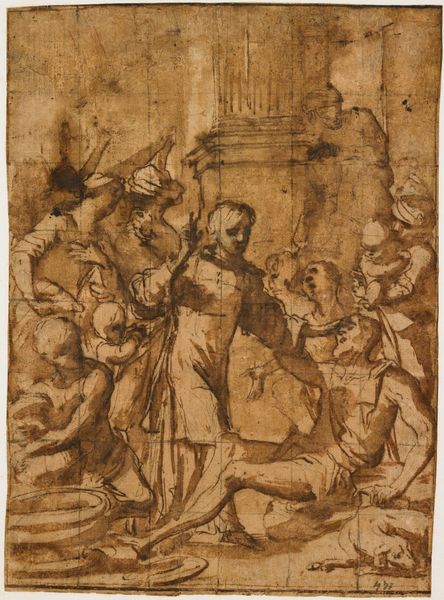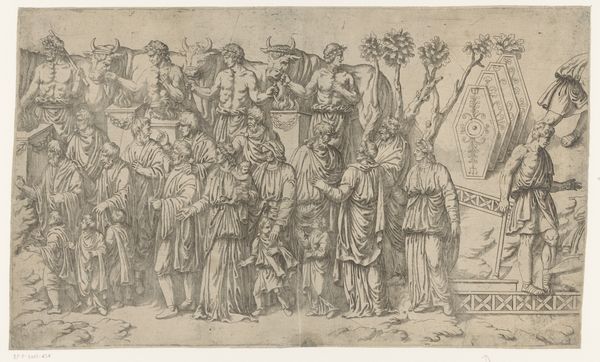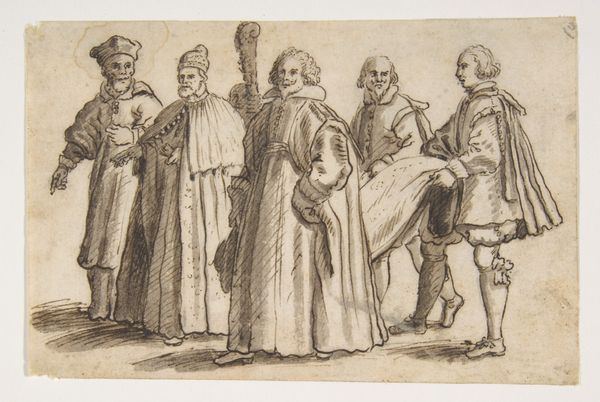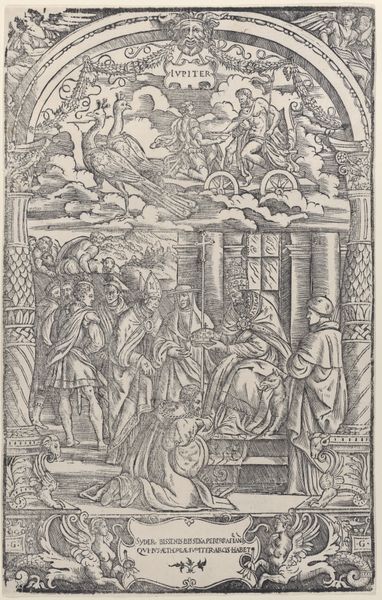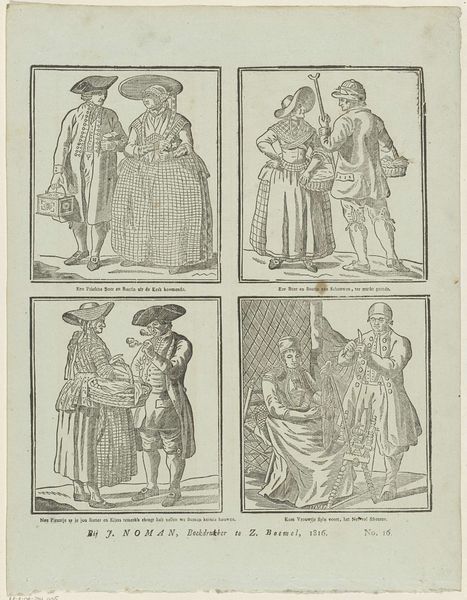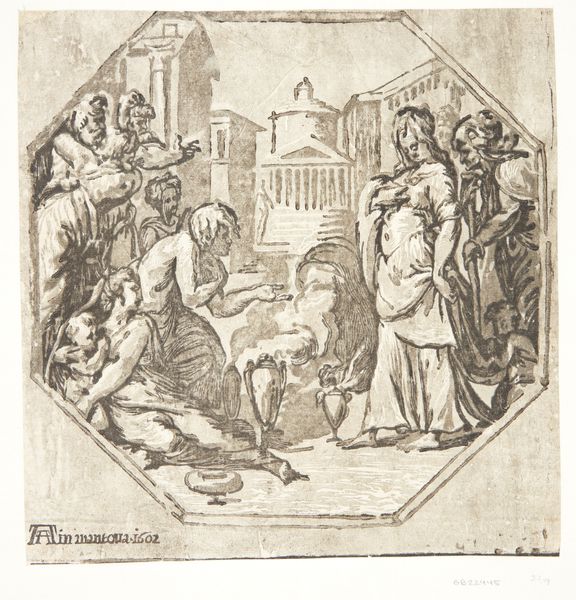
Famous Men and Women from Classical and Biblical Antiquity 1450s
0:00
0:00
drawing, coloured-pencil, print
#
drawing
#
coloured-pencil
#
medieval
# print
#
figuration
#
coloured pencil
#
men
#
history-painting
#
international-gothic
#
italian-renaissance
Dimensions: 12 3/16 x 7 7/8 in. (31 x 20 cm)
Copyright: Public Domain
Editor: So this piece, "Famous Men and Women from Classical and Biblical Antiquity," is a drawing made with colored pencil around the 1450s by Barthelemy d’Eyck. What strikes me is the almost dreamlike way these figures are presented – like archetypes floating on the page. How do you interpret this work? Curator: It is indeed fascinating, isn’t it? Notice how d'Eyck employs specific symbols to represent each figure – think of the objects they carry, their gestures, even the placement on the page. Each of these visual cues taps into a well of cultural memory. Take Agamemnon, for example, seated with his scepter: how does that pose recall traditional images of kingship? What emotions does it conjure, especially when positioned next to figures from biblical history? Editor: Well, I see the scepter and immediately think of authority. The positioning near what looks like a scene from Greek myth... it kind of blurs the line between the sacred and the secular, right? Curator: Precisely. It questions the perceived boundaries between classical heroism, biblical morality, and political authority. What feelings arise when considering this collection together? Editor: A sense of continuity, I think. Despite being from different eras and stories, they're presented as equally important, influencing each other across time. Curator: Exactly! D'Eyck uses imagery to suggest a shared human narrative, exploring the ways symbols resonate across cultures and shape our collective understanding of history. It invites us to consider our own cultural memory: what images do we carry forward, and what do they tell us about ourselves? Editor: That’s really fascinating, to think about these images as actively shaping our understanding. It makes me see them in a completely new light. Curator: Indeed, the symbols create an interweaving of visual, emotional, and cognitive connections across time.
Comments
No comments
Be the first to comment and join the conversation on the ultimate creative platform.
